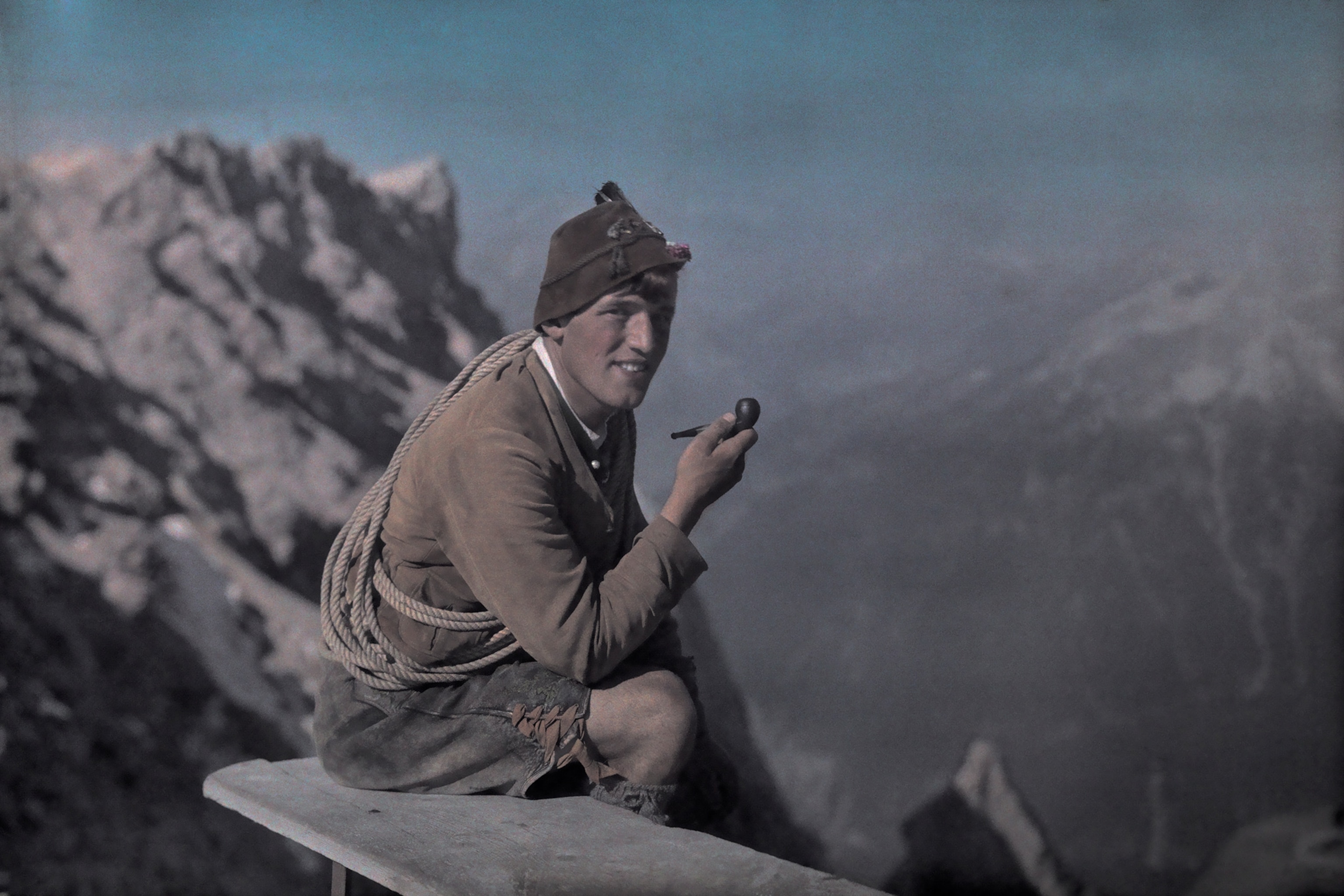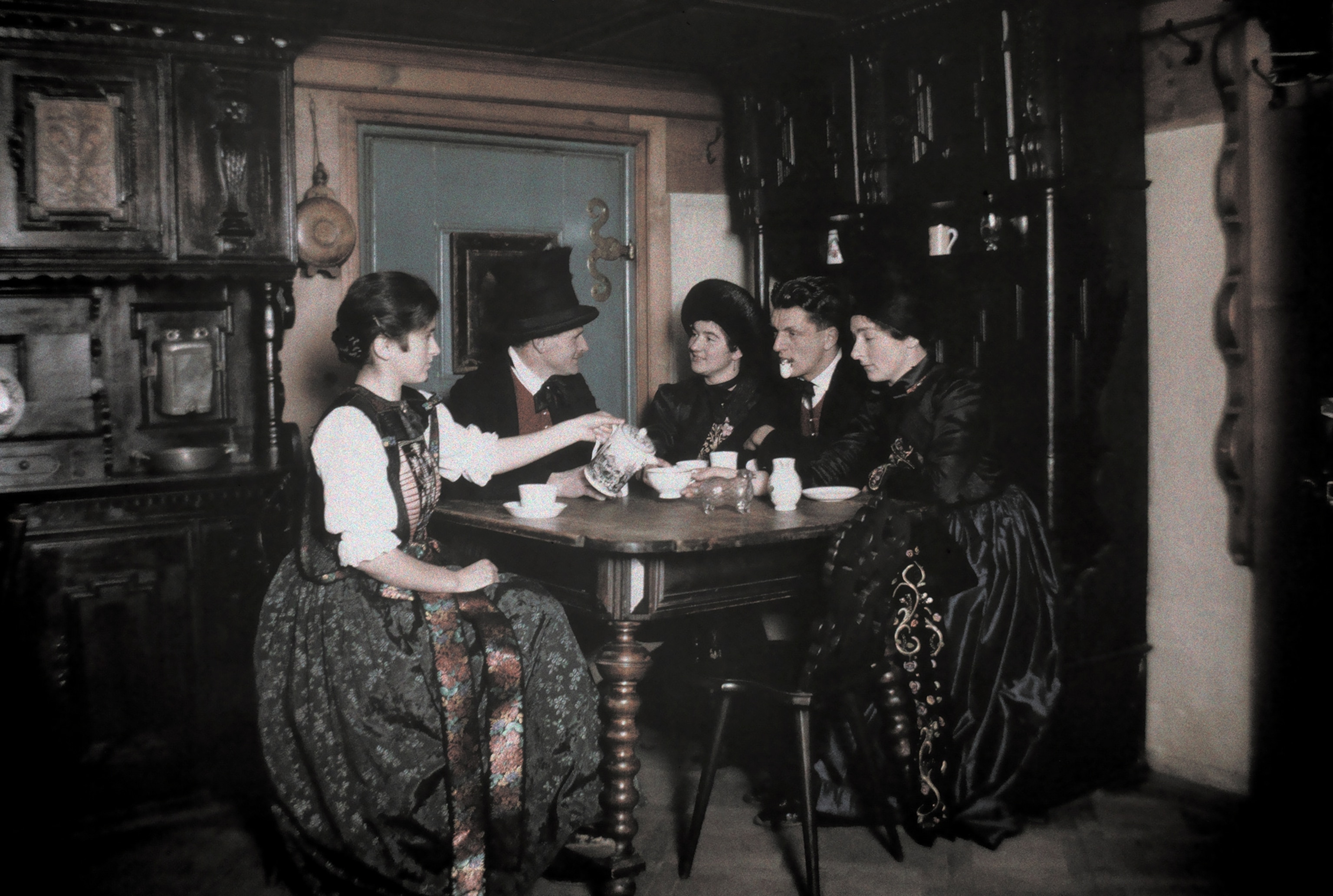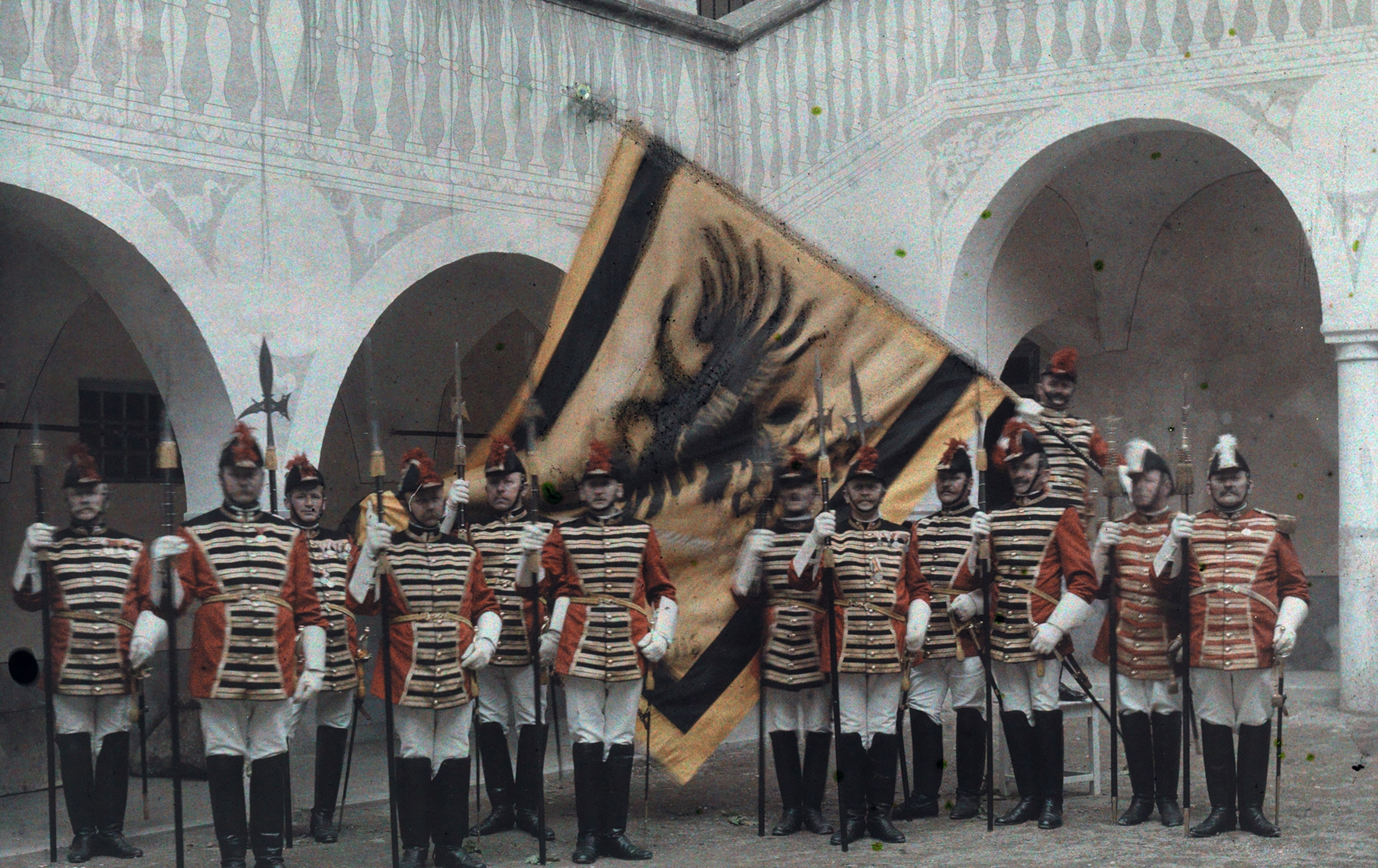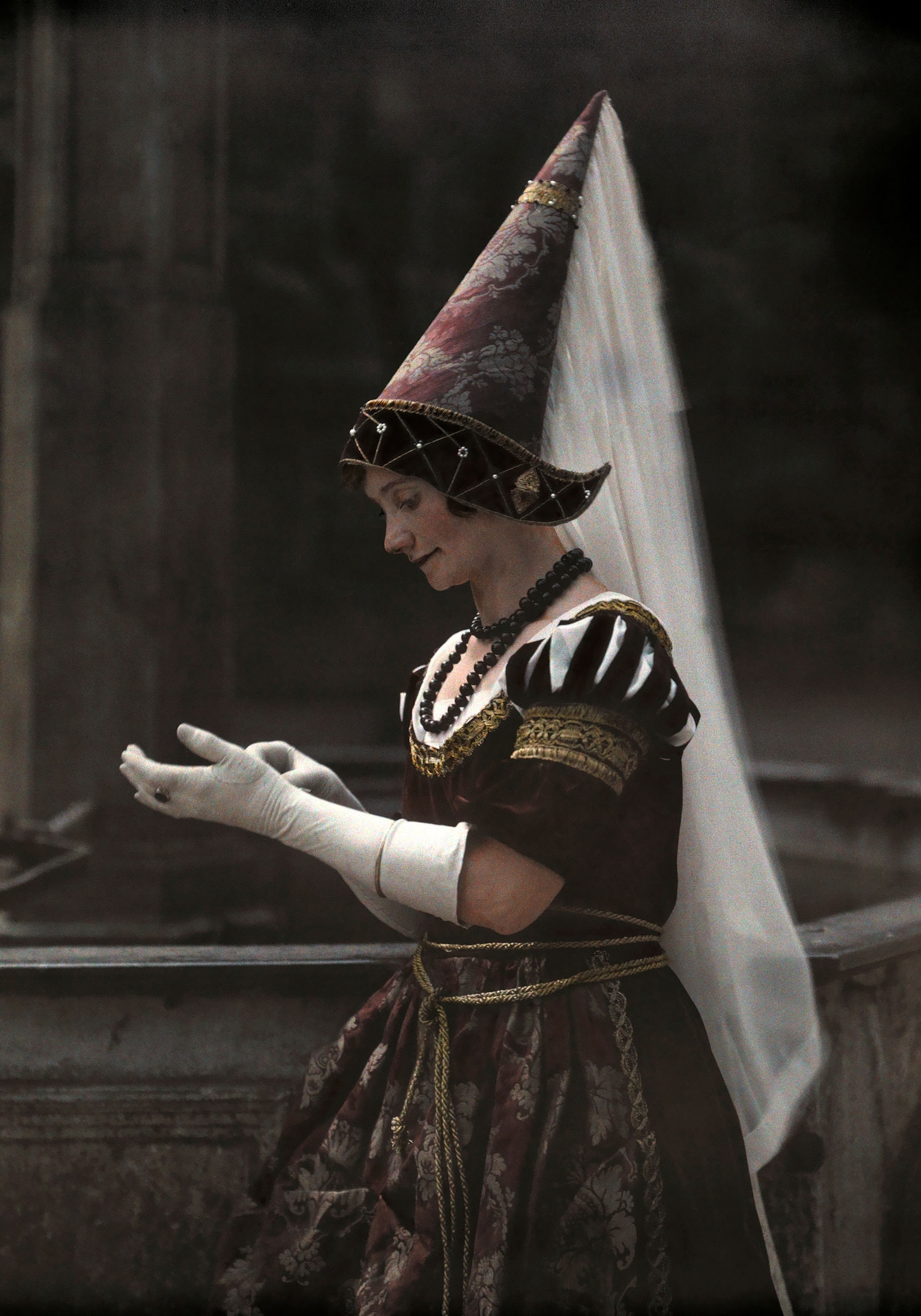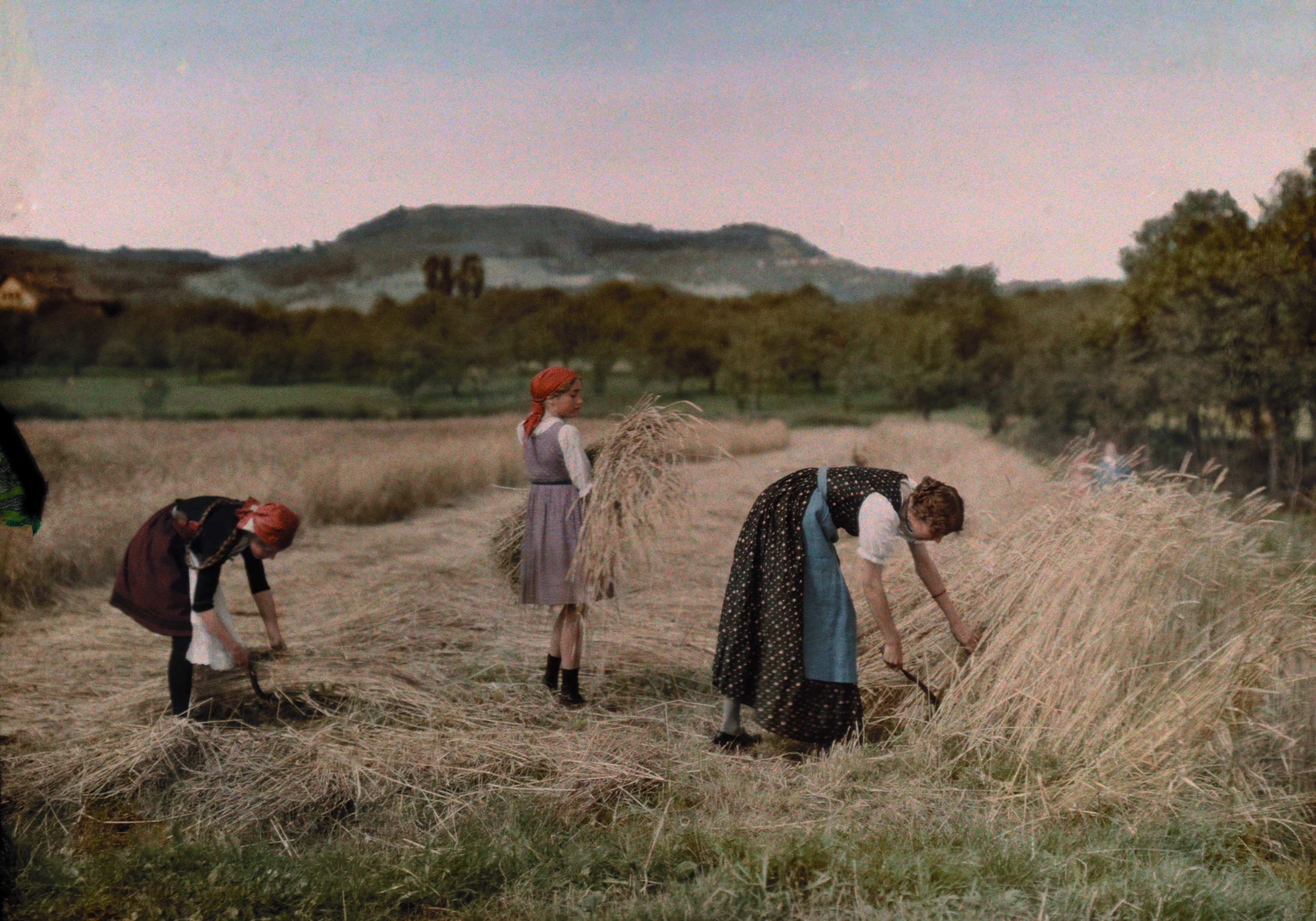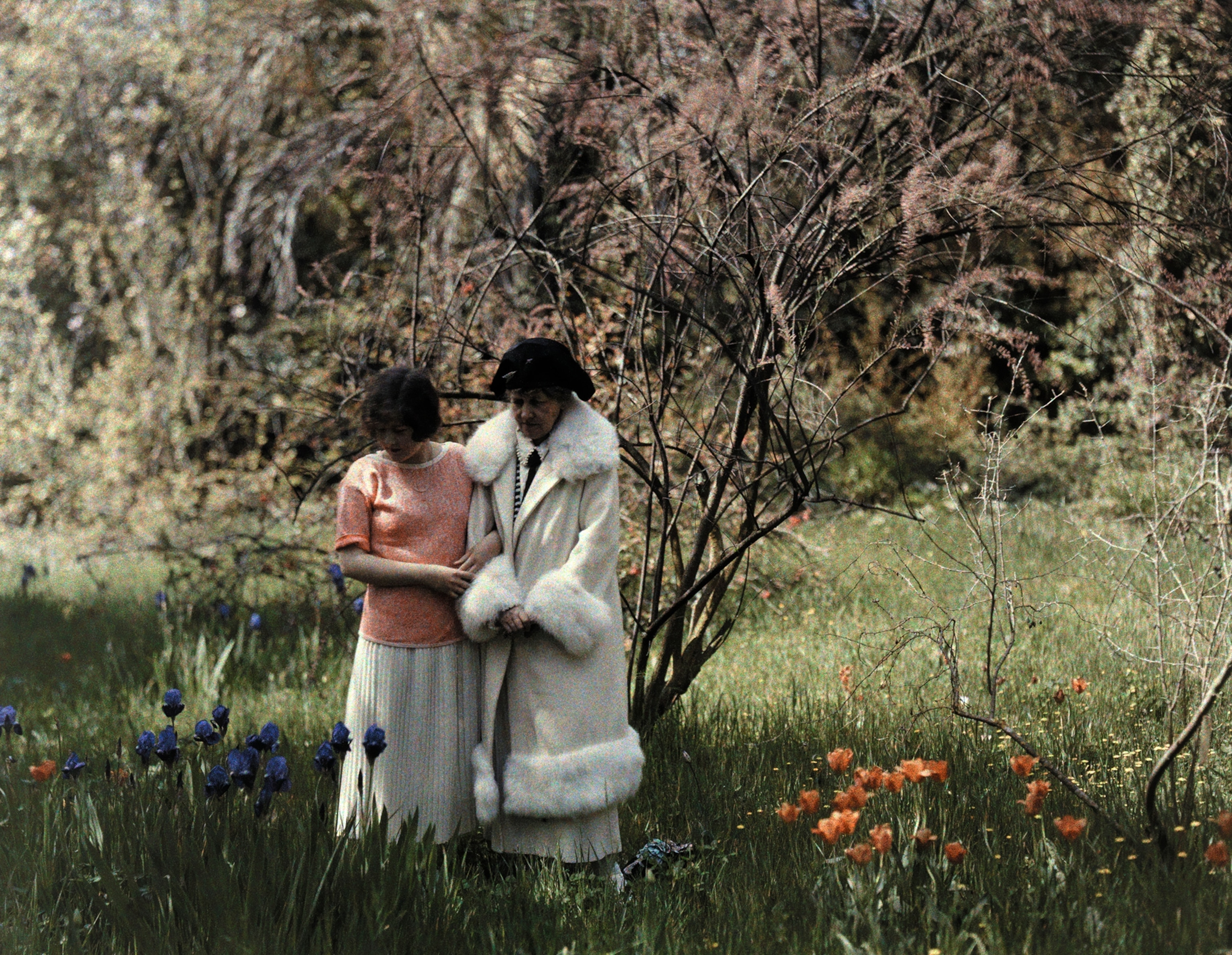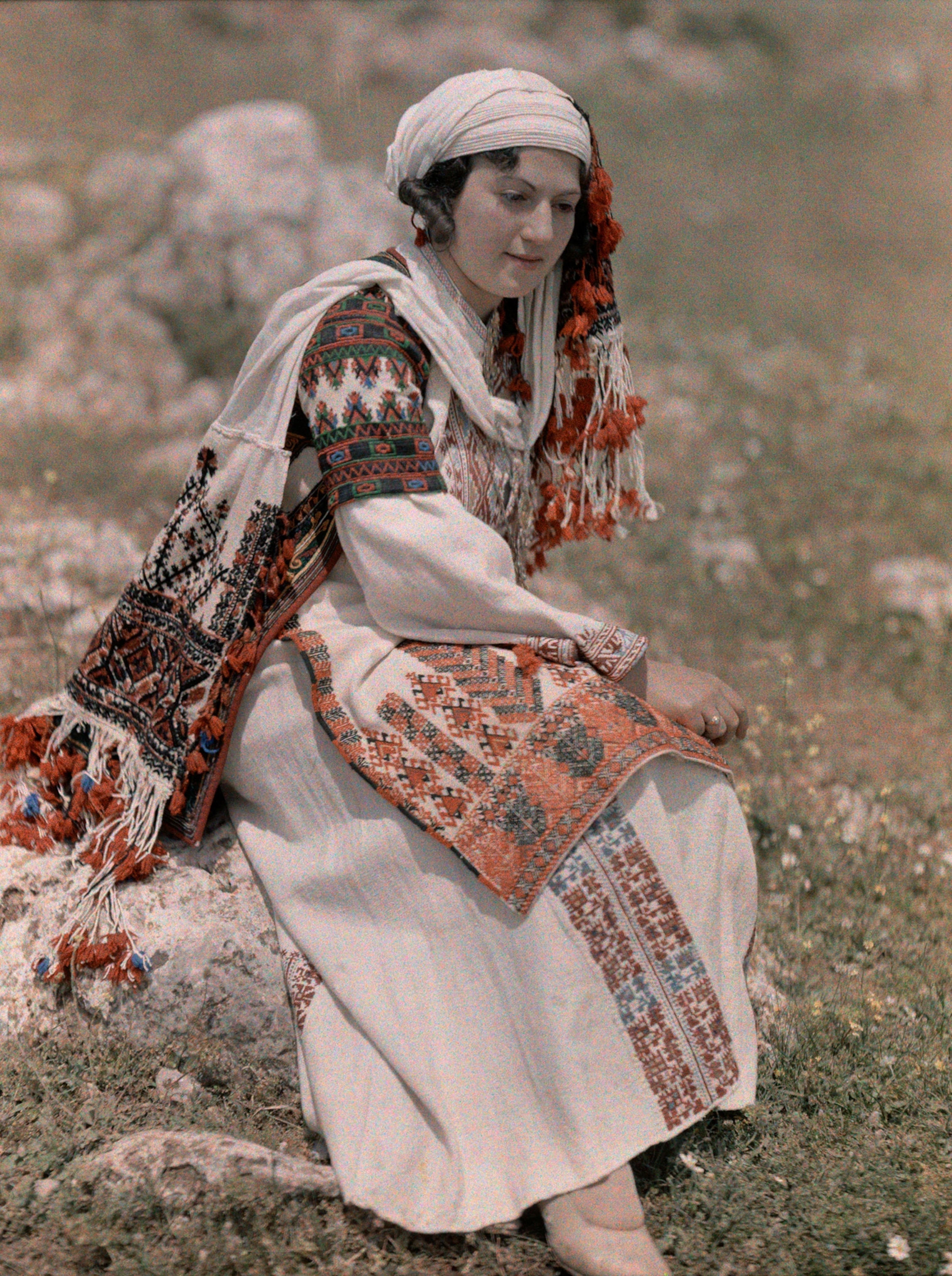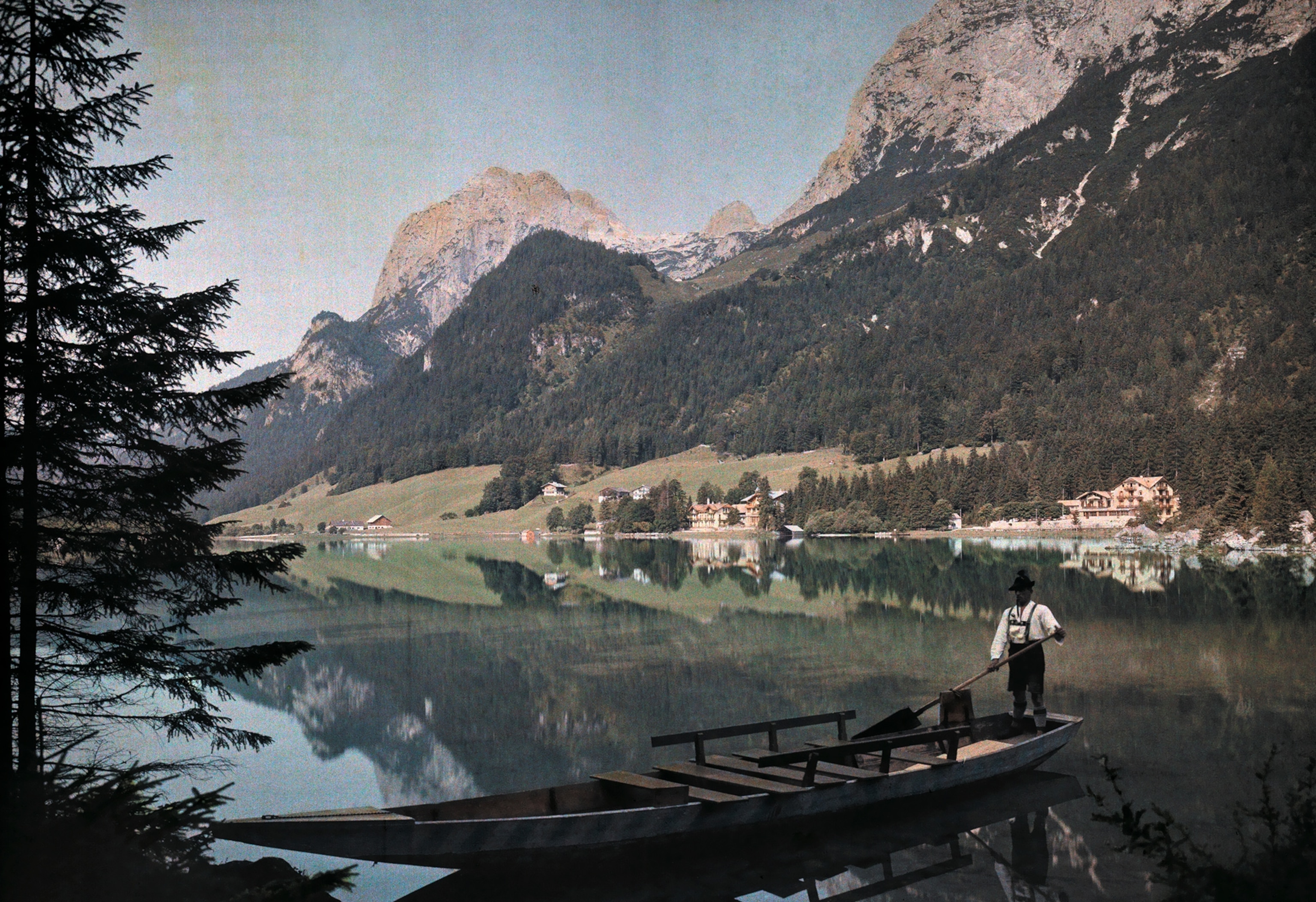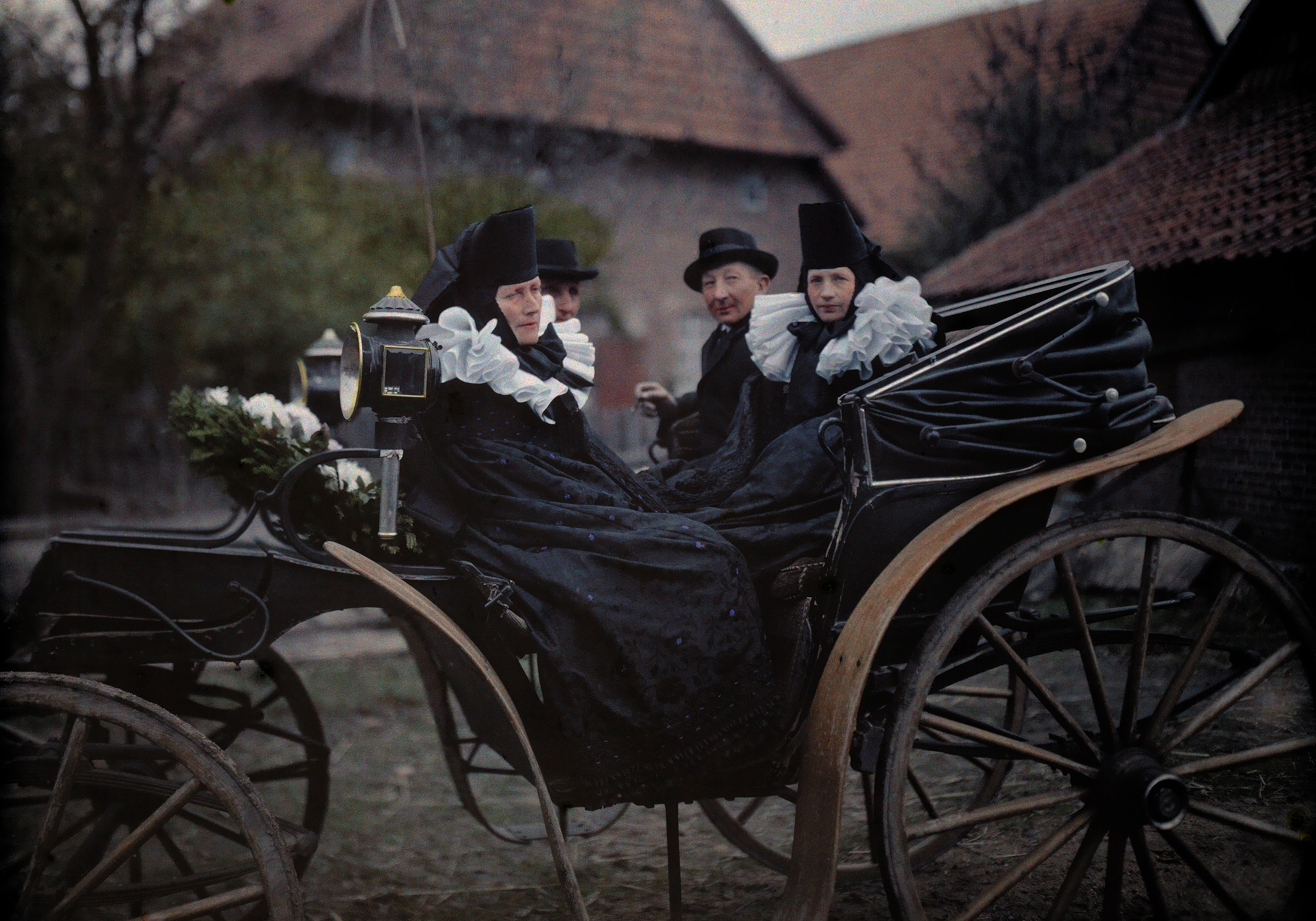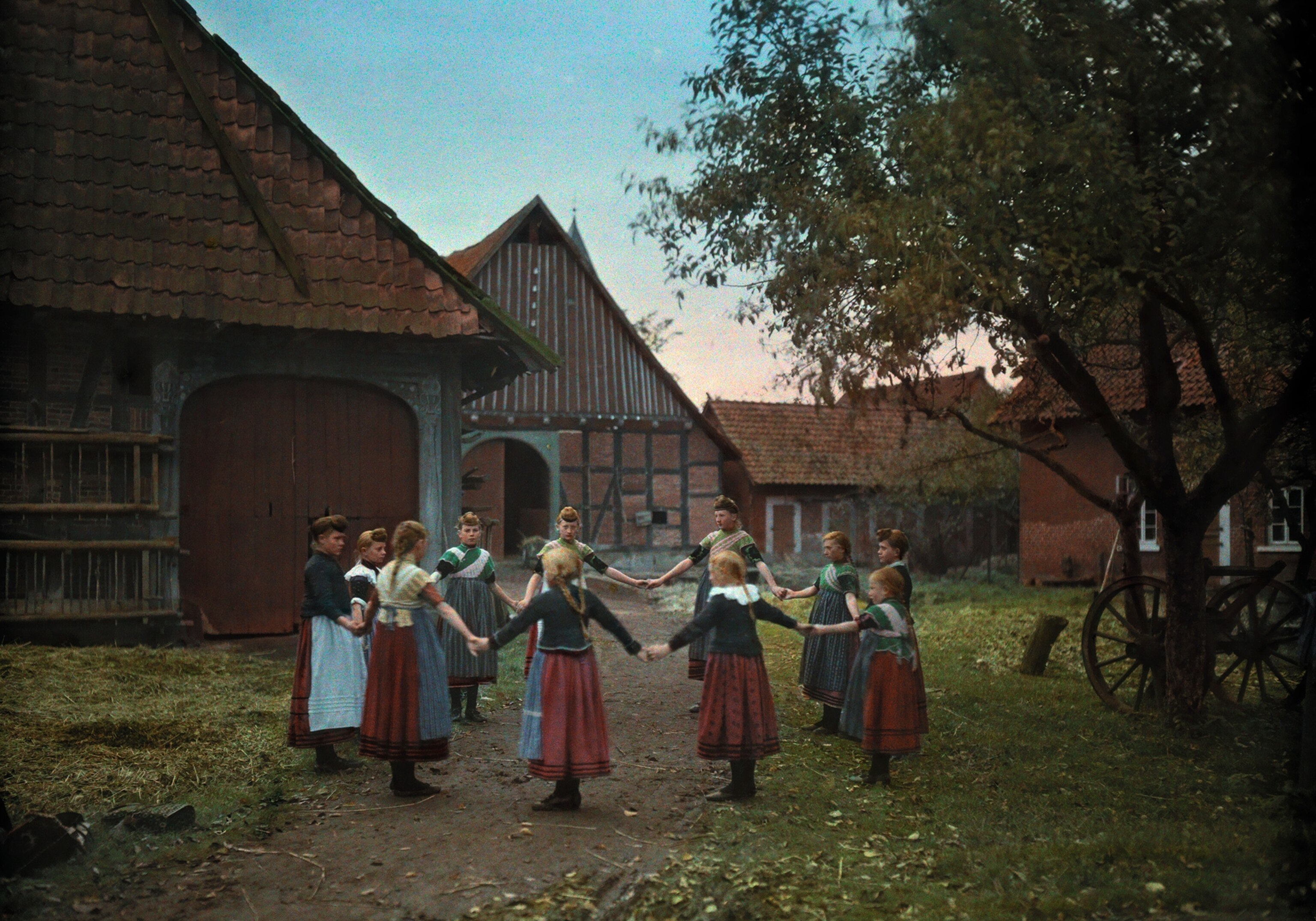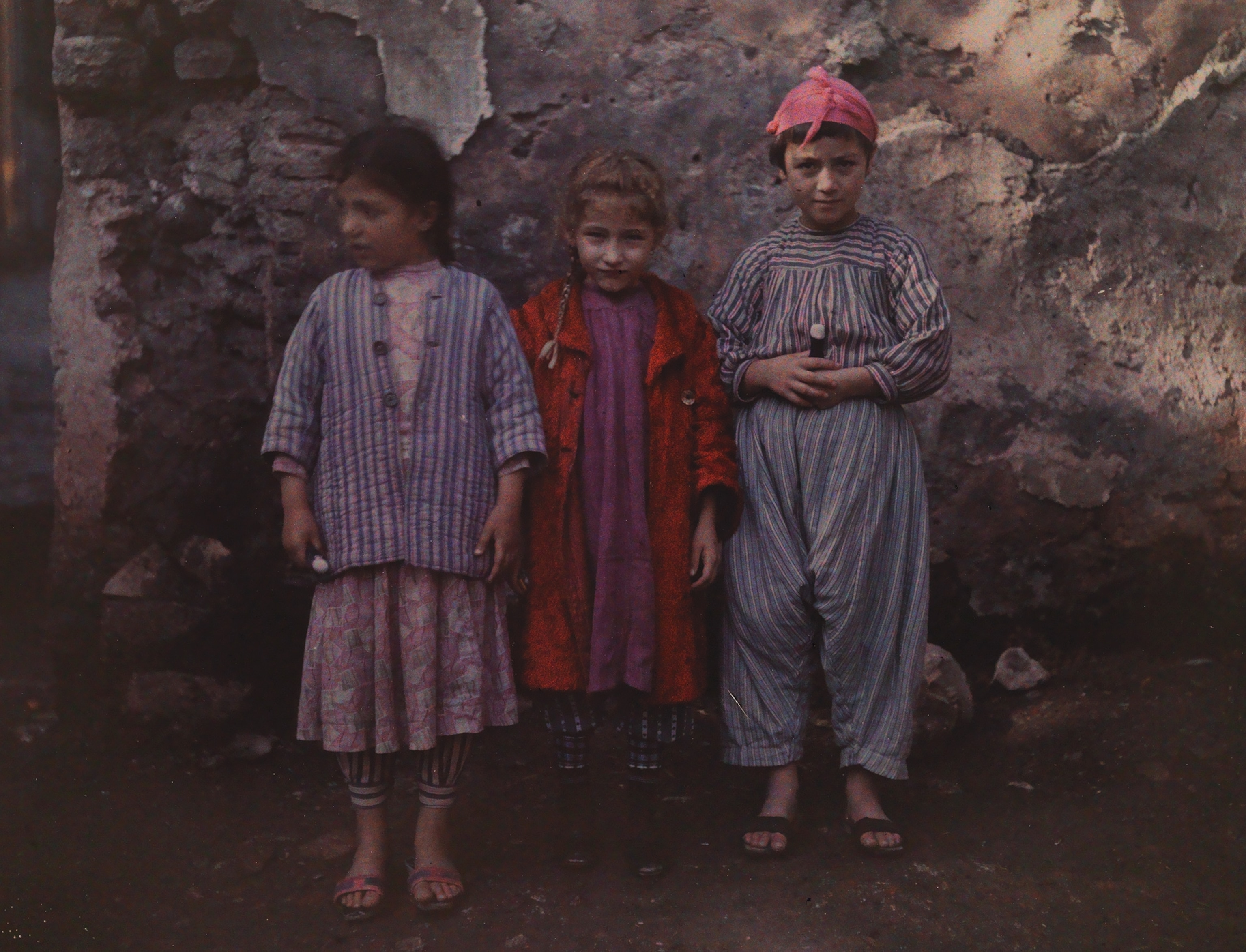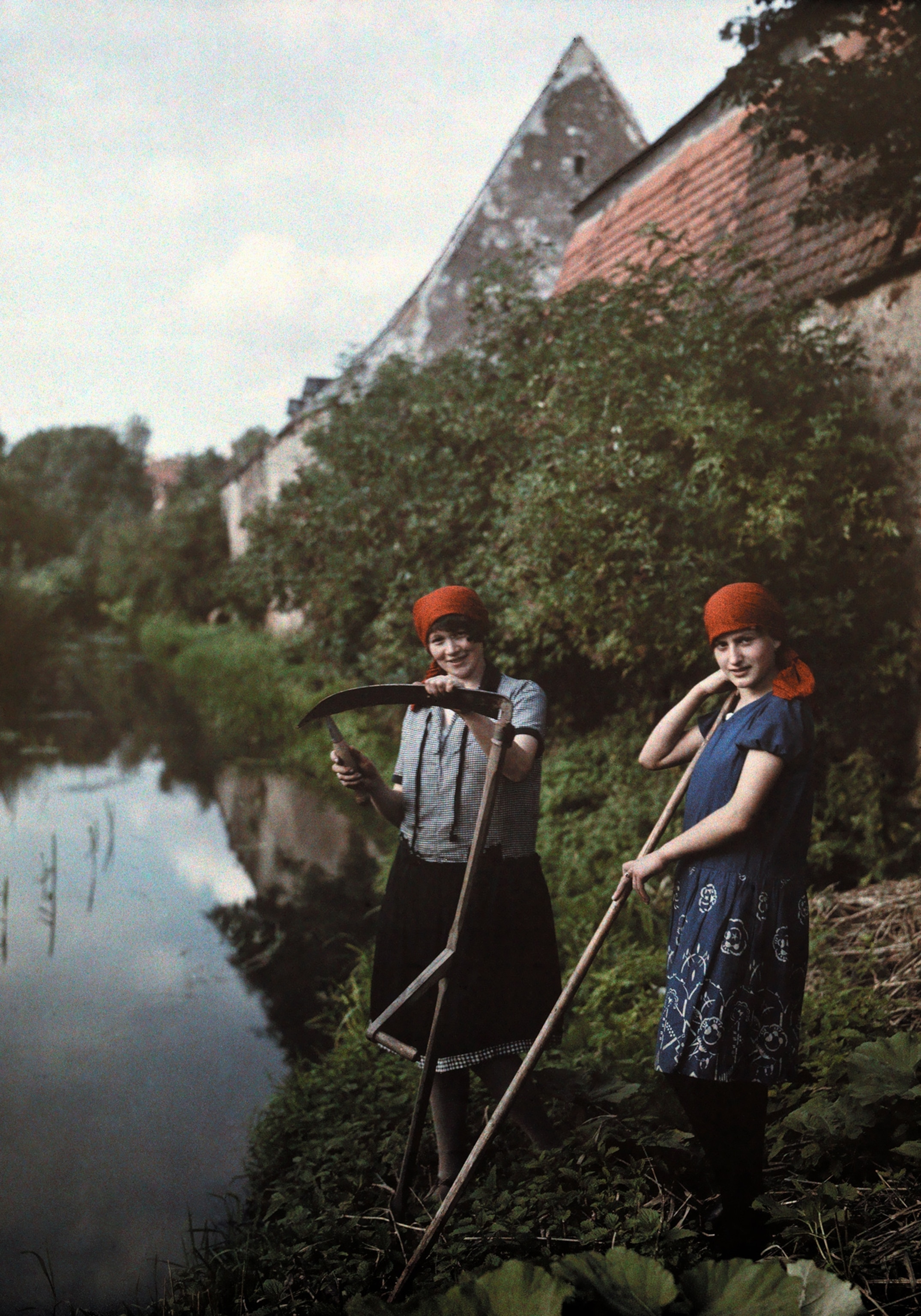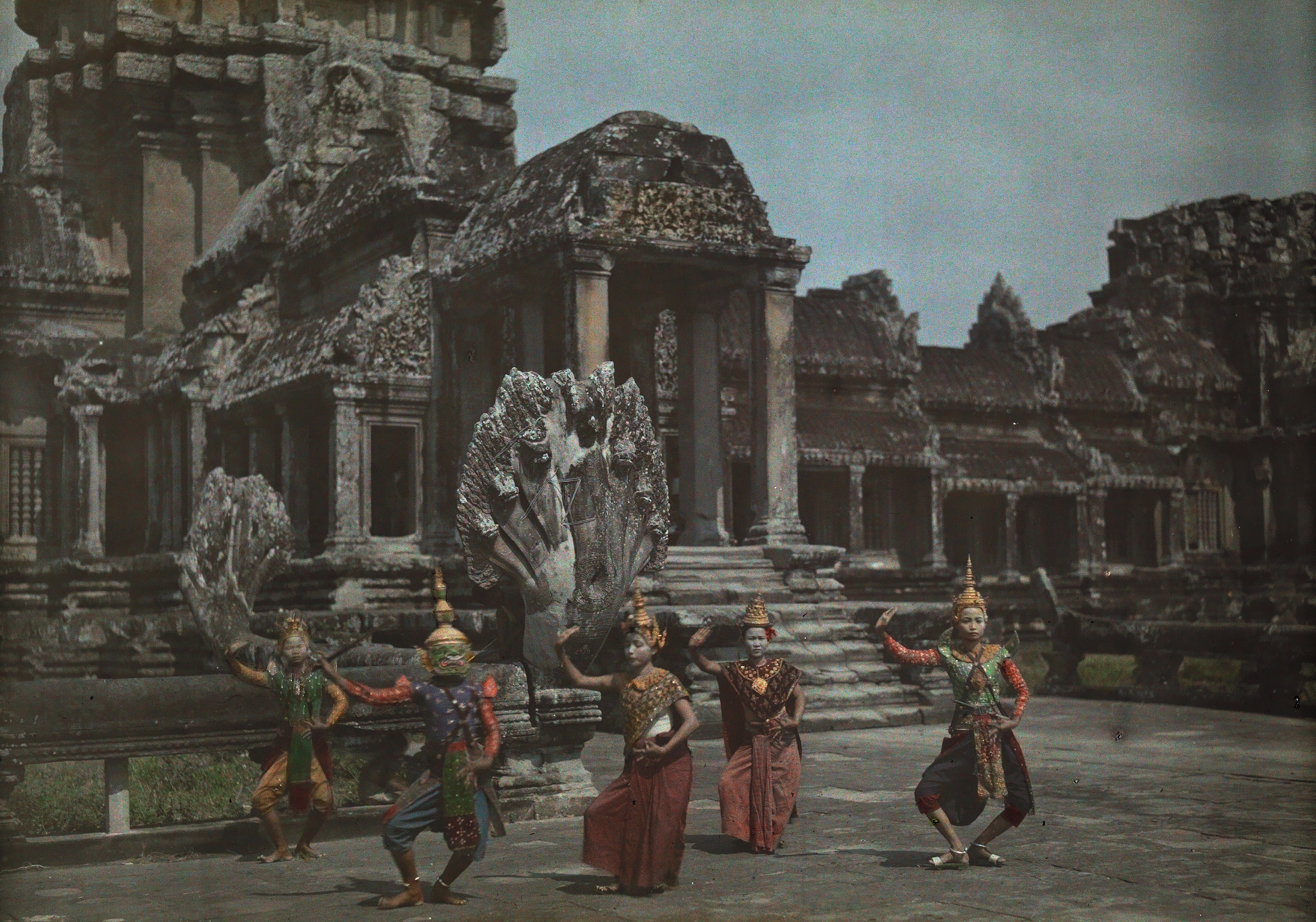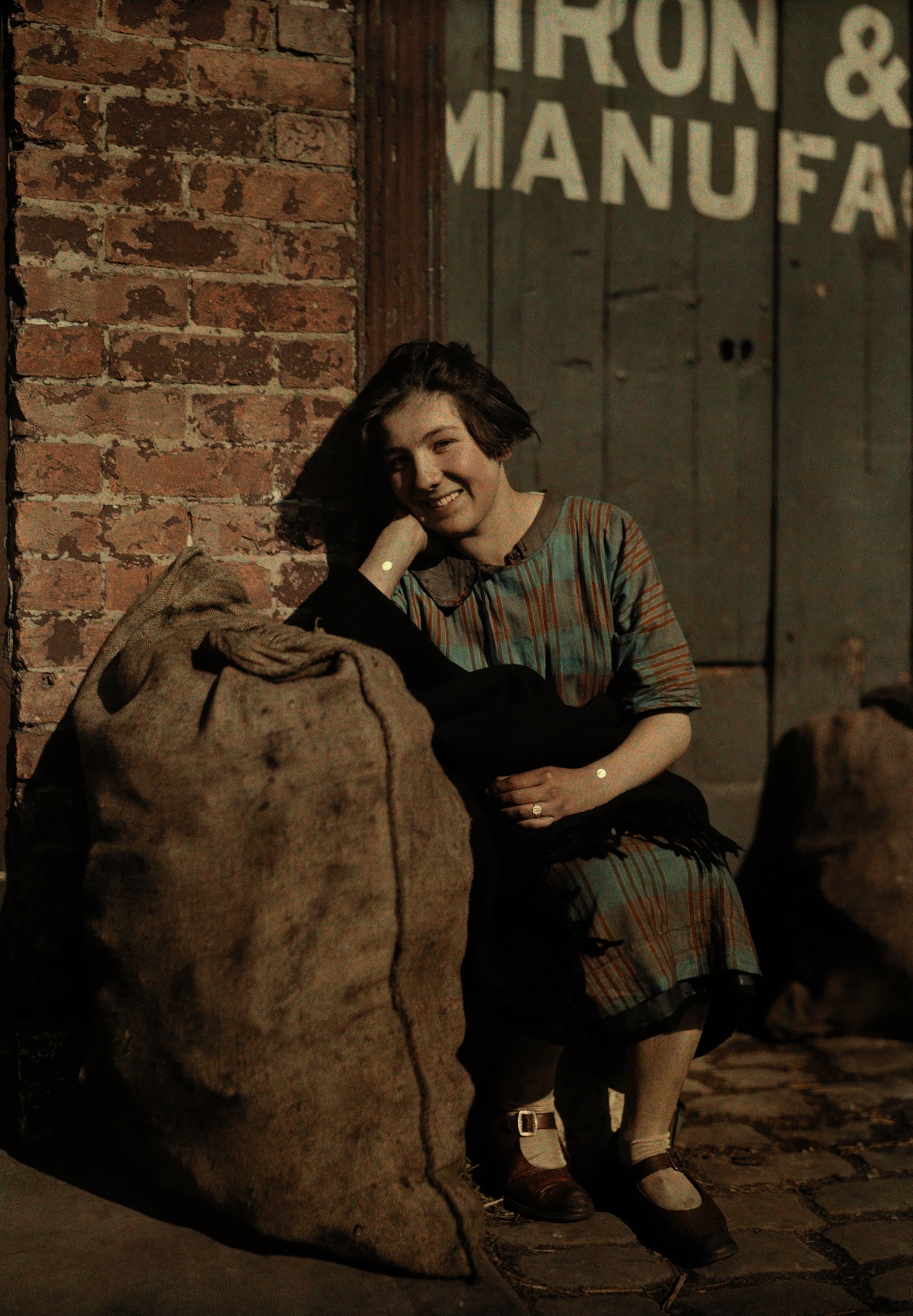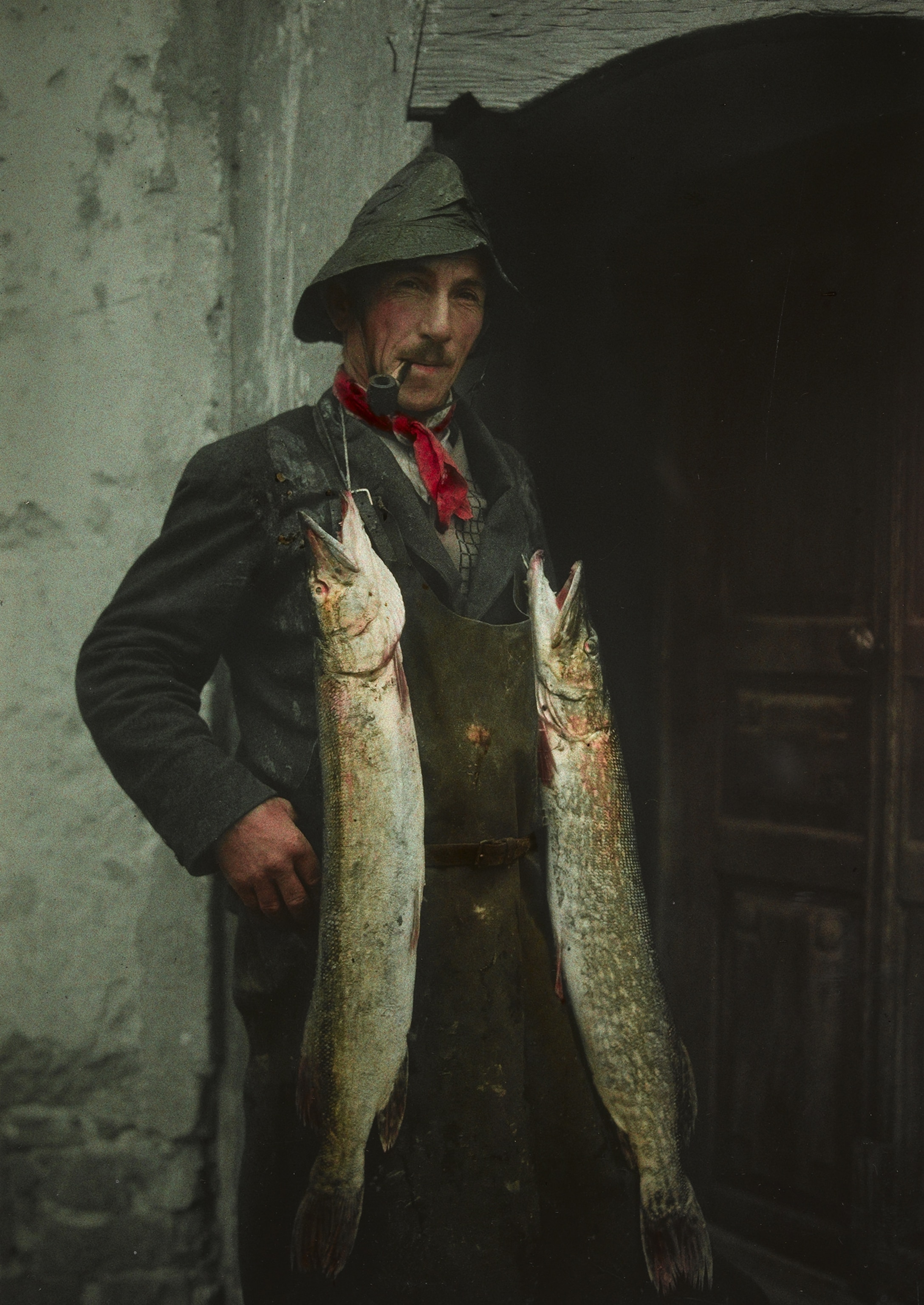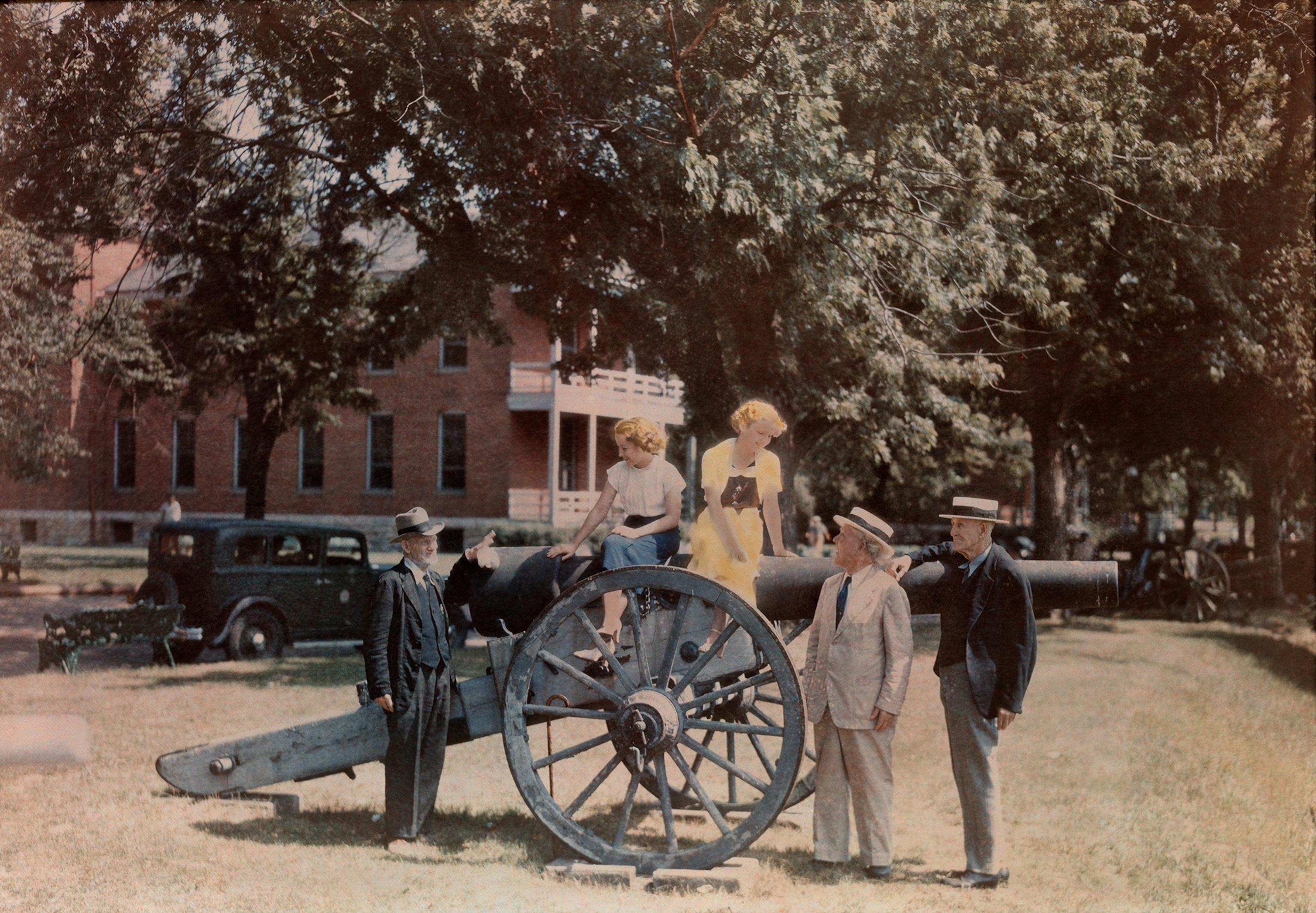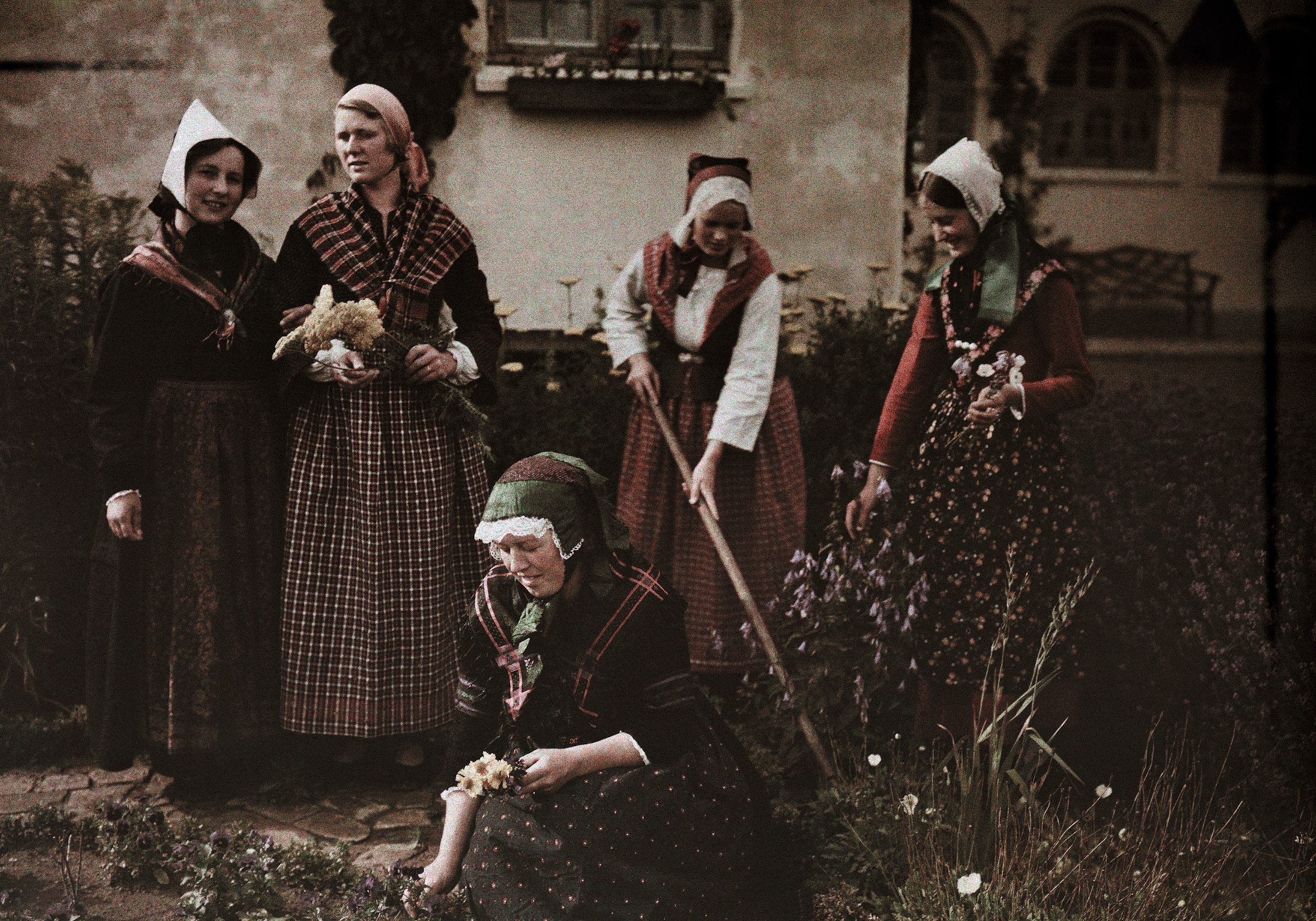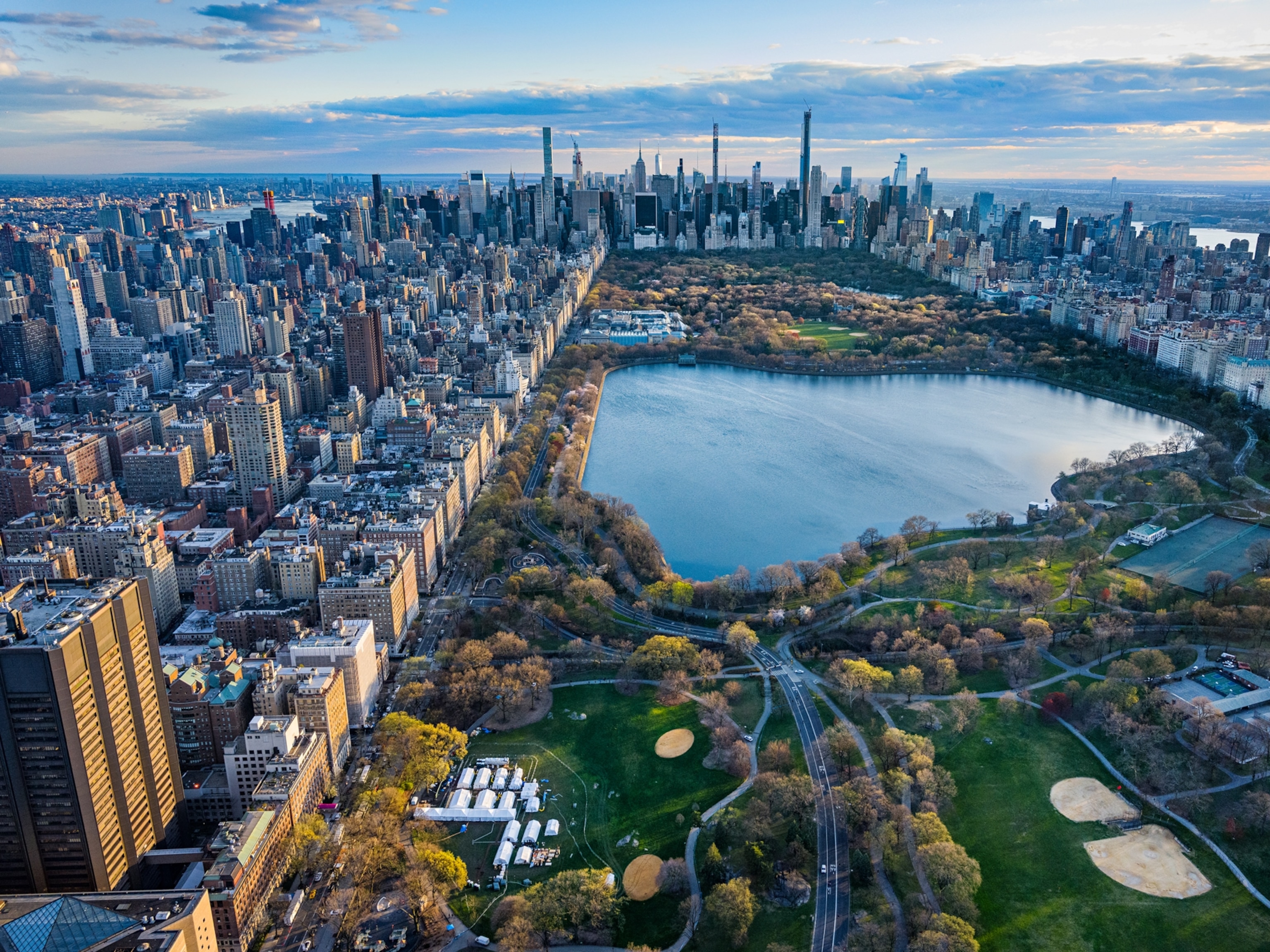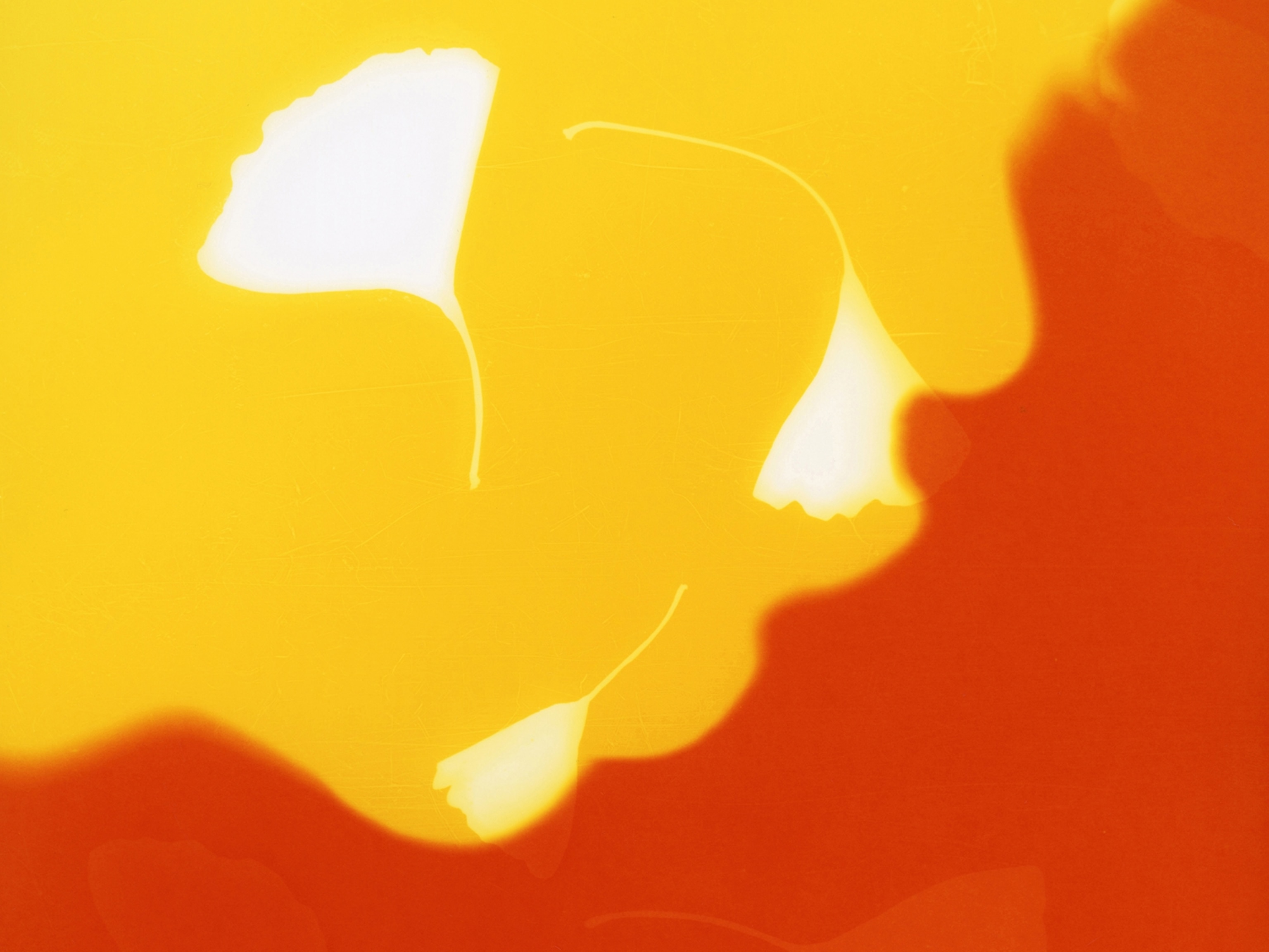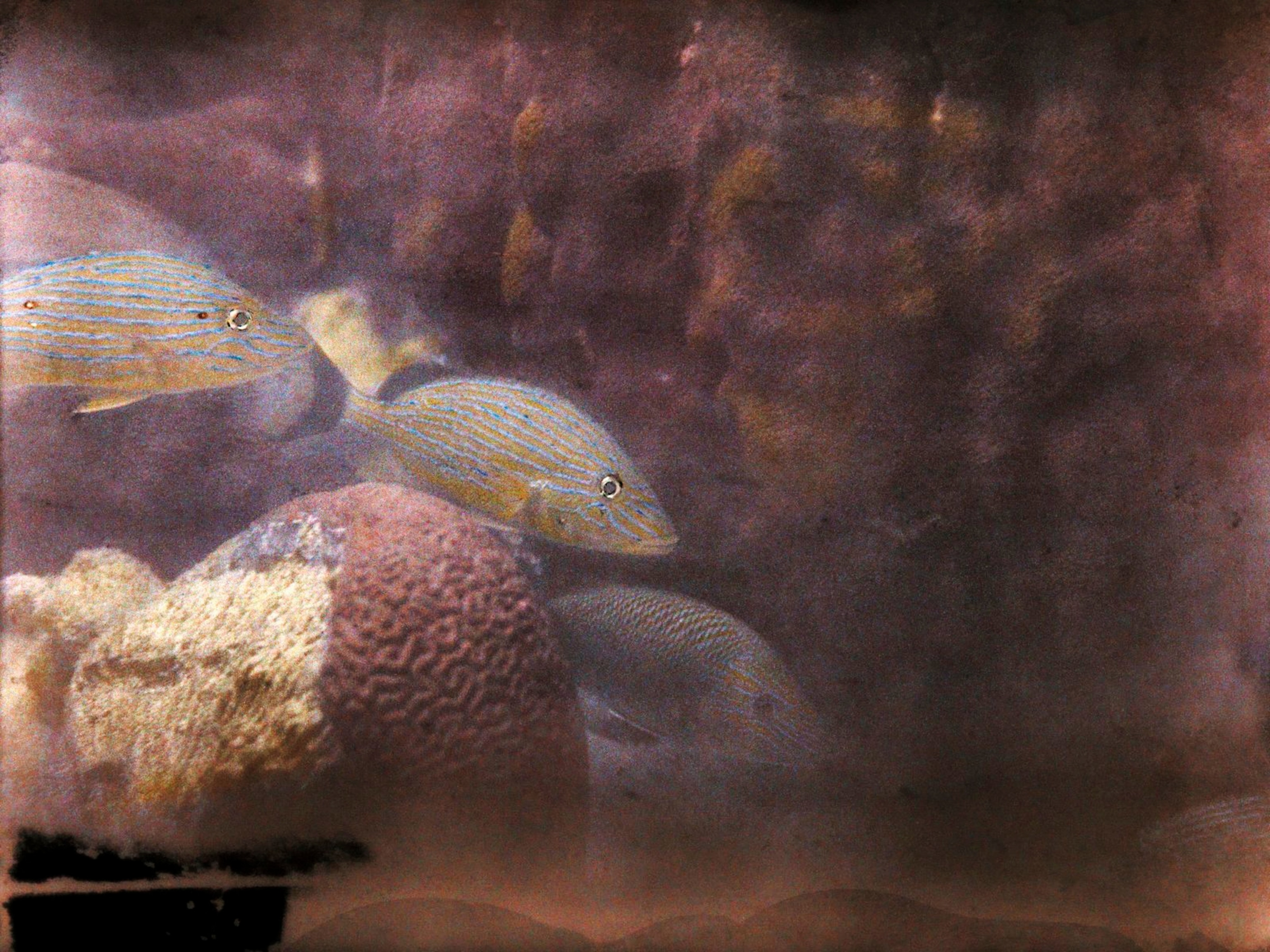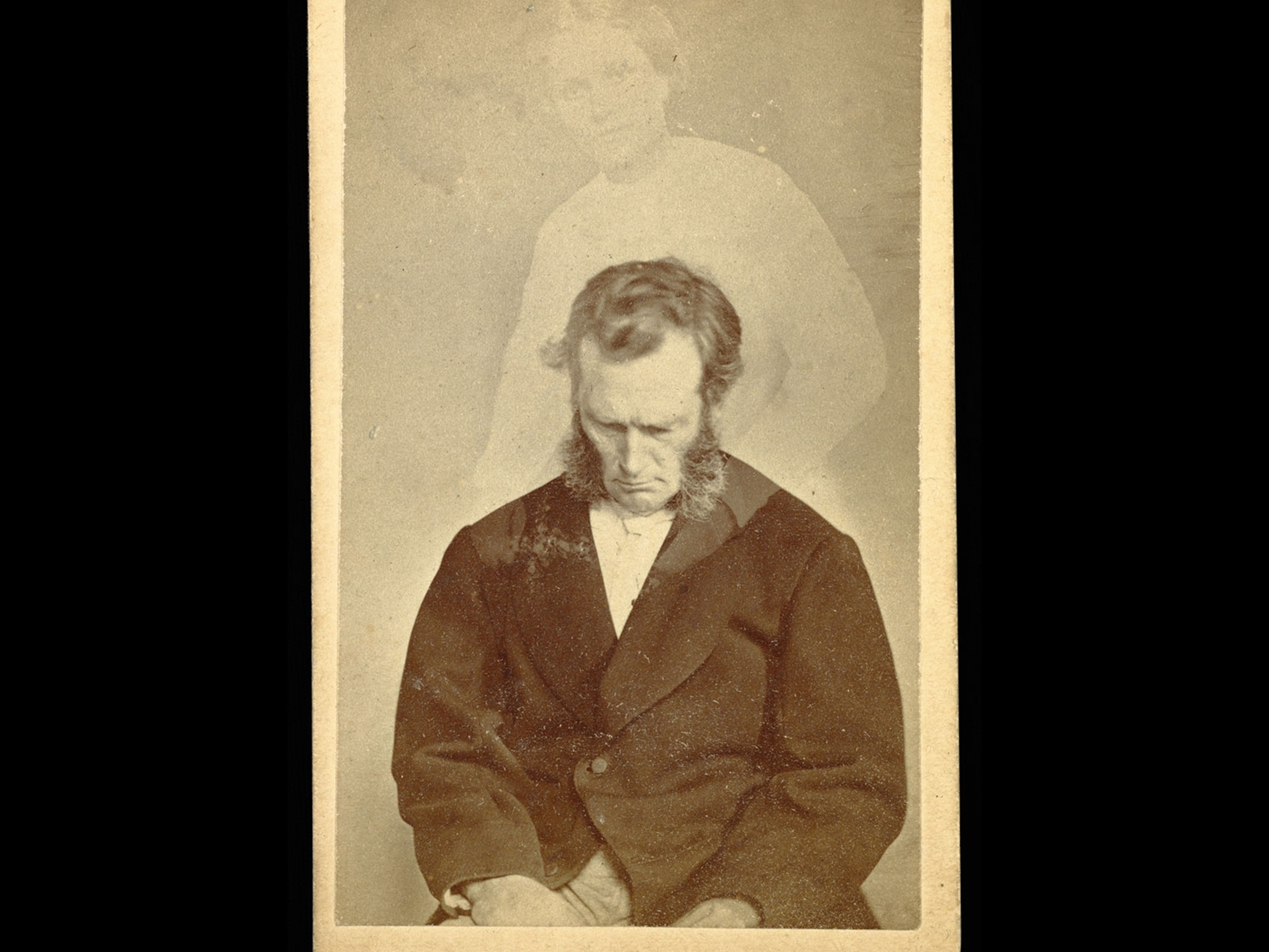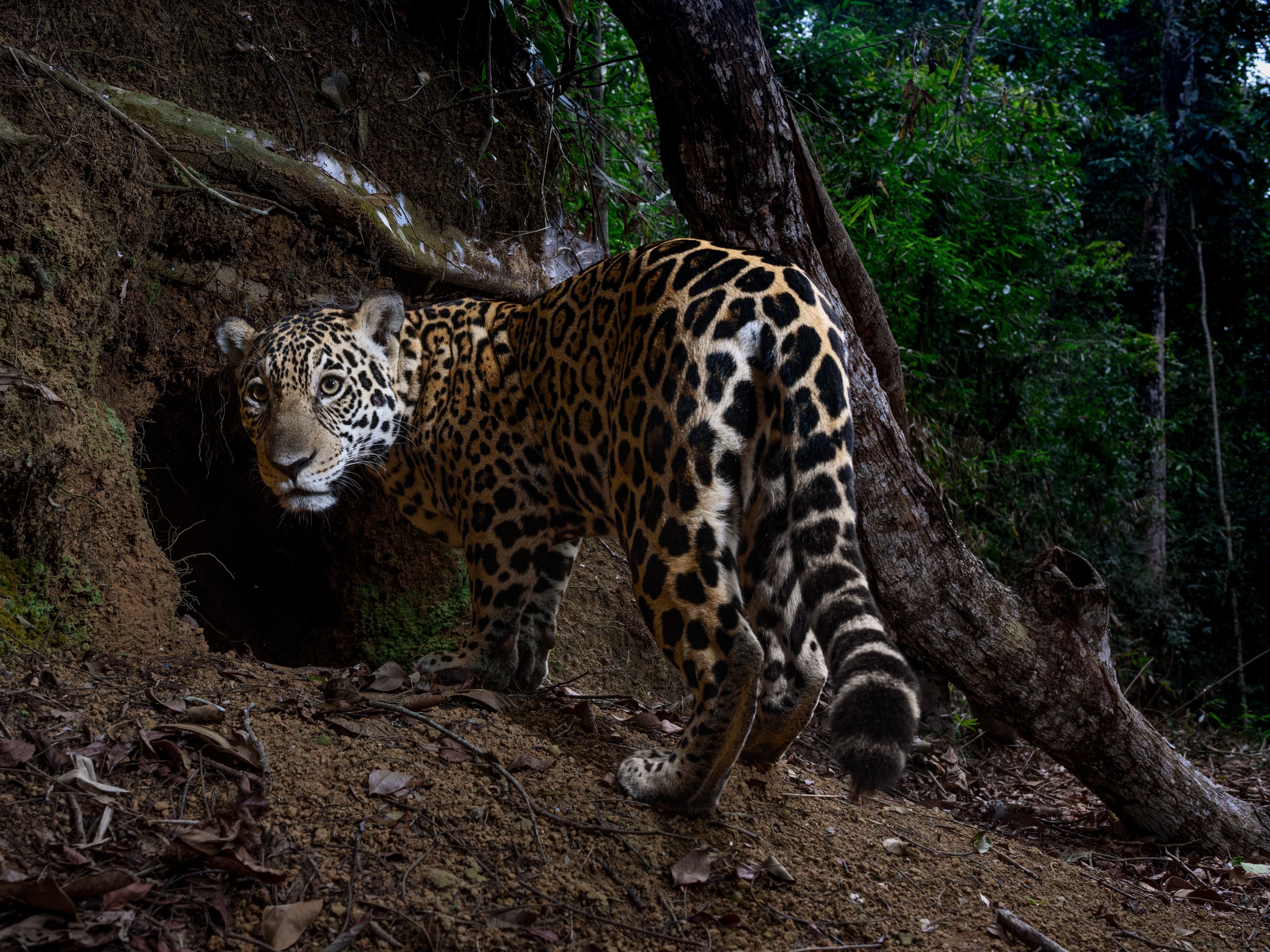These 18 Autochrome Photos Will Transport You to Another Era
The method used to make these dreamy photographs resulted in a painting-like quality that not even today's best Instagram filters can replicate.
August and Louis Lumière were pioneers in photography. Legend has it that in 1895, when they premiered their first motion picture film of a train entering a station, audiences fled in terror, fearing they would be flattened by a "moving" train.
By 1907 they had turned their sights to color photography, inventing the first camera capable of capturing life in color—the Autochrome Lumière.
"It's unique to see this period of time in color," says Sara Manco, a photo archivist with National Geographic. "It has a hazy, ethereal-looking quality, like a painting that isn't actually a painting."
Autochromes owe much of this stylized look to the method in which photos were made. Using a glass plate coated with dyed red, green, and blue potato starches, a layer of emulsion was then added to the plate. These plates were then inserted into the camera, which had a lens that filtered the light that passed through the glass.
Because autochrome photography required a much longer exposure time than the film used to capture black-and-white images, subjects had to be still or slow moving.
"It's almost impossible to replicate today," says Manco. "You would have to be incredibly good at chemistry."
The technique became popular at National Geographic for its ability to showcase different parts of the world in vibrant color. Autochromes were so widely used that the magazine now has one of the largest collections in the world, second only to Albert Kahn's Archive of the Planet.
The first autochrome photo published in the magazine was taken in 1914, by pioneering explorer Eliza Scidmore, during her trip to Japan. The depth of color allowed her to showcase vibrant pink cherry blossoms and richly hued garments.
In her correspondence with magazine headquarters, she wrote of her photos: "I have had them made uniform in size and strongly colored so that you can cover yourself all over with glory with another number in color and thereby catch a few thousand more subscribers."
Exactly 14,980 autochromes sit in temperature-controlled rooms at National Geographic's headquarters, protecting them from damaging light, heat, and humidity. Of the copious glass plates in storage, 6,475 have been digitized through an initiative called Save the Archives.
The last recorded autochrome photo was submitted to National Geographic in 1939. By then, the popularity and ease of Kodachrome color photography had rendered the autochromes no longer necessary, though their dreamy quality is hard to replicate.
This gallery features the work of German photographers Hans Hildenbrand and Wilhelm Tobien. See dozens more of their photos together in our December 1929, May 1931, August 1933, and April 1937 issues.
